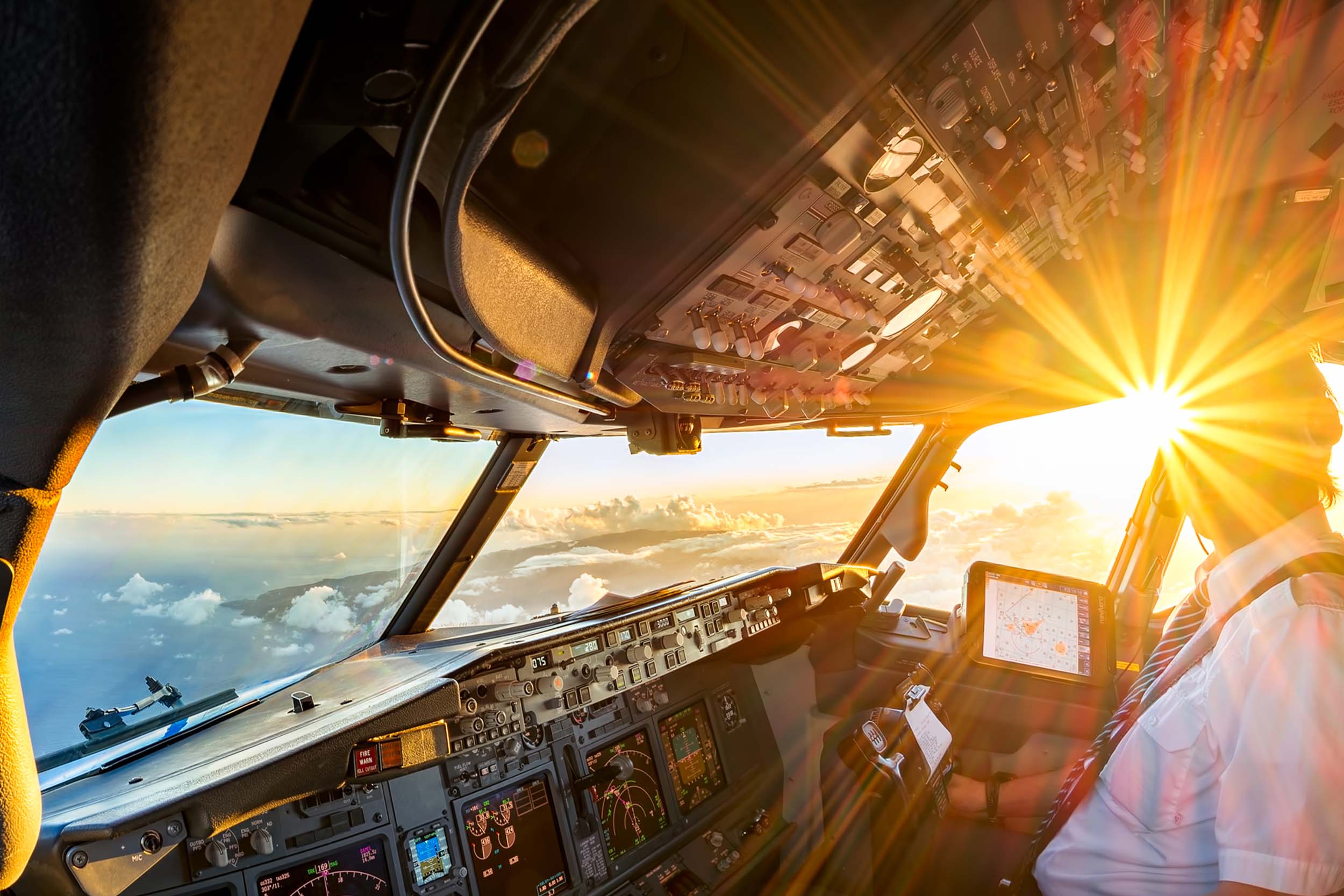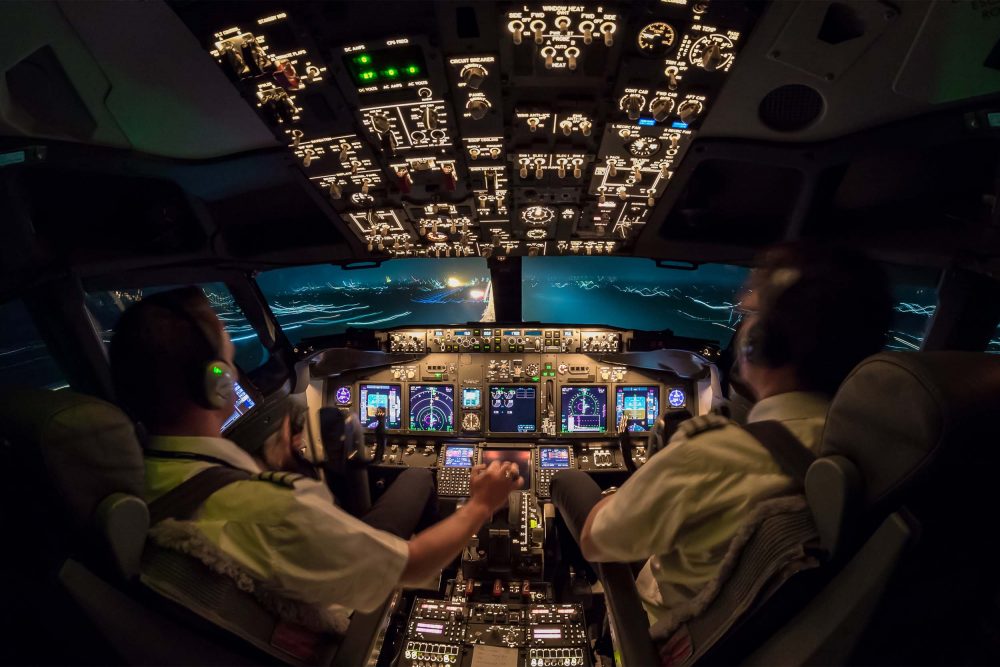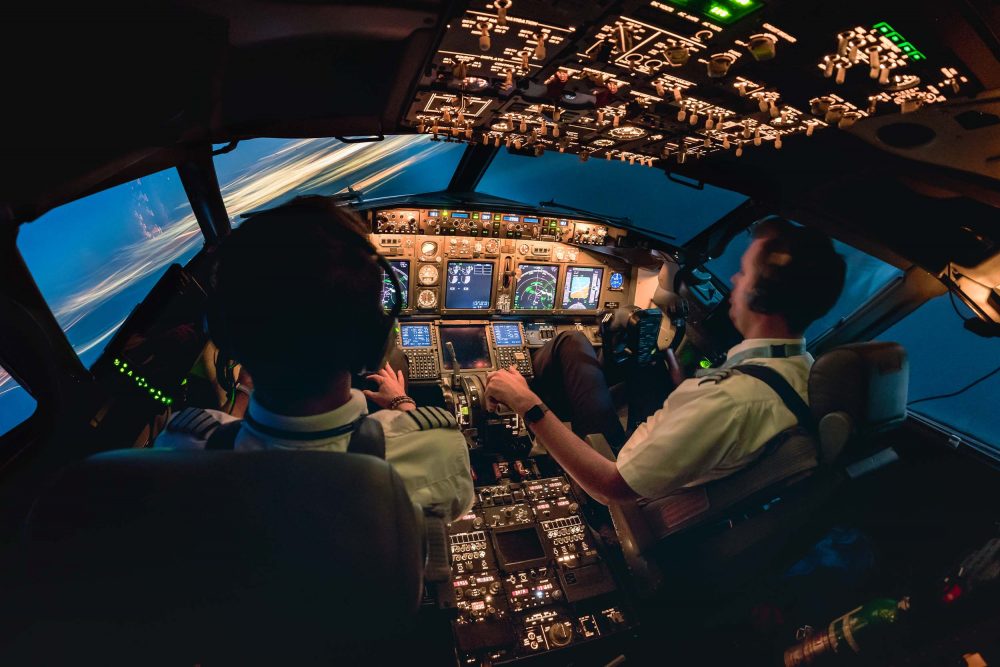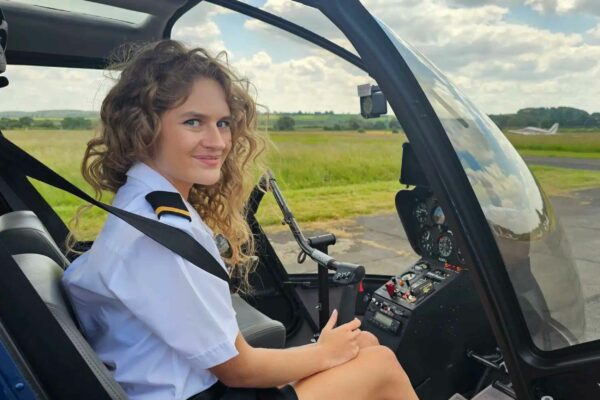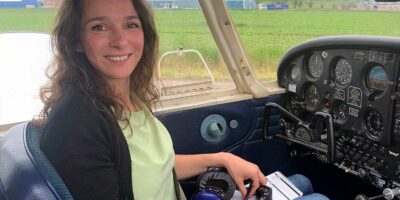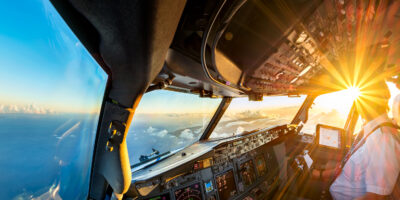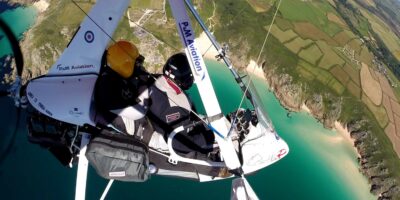Q How much will it cost and how do I fund it?
Courses to the point of licence issue will typically cost between £60k and £100k, plus living costs.
Scholarships are available for some elements of modular training, such as ground school and a Private Pilot’s Licence. Very few airline schemes will fund the cost of training for those accepted onto their schemes.
Typically, airline ‘schemes’ will consist of a ‘sponsored’ ATPL or MPL, with the sponsorship taking the form of provisional job offers upon completion of training, while requiring the cadet to shoulder the cost of training. Fewer bank loans are available than they have been in the past, and it is still a popular choice for trainees to get private loans from the bank of mum and dad…
The total cost of your pilot journey, will also include the cost of a Type Rating, which is an aircraft-specific course, only undertaken upon securing an airline job. The cost will range from around £15k to £40k, and each employer will have a different ‘deal’. Typical arrangements are that a pilot is bonded for the cost of the type rating, a bond that diminishes with services or disappears after a length of time. Others will require the trainee to pay upfront.
Professional flight training is one of the most expensive investments you’ll ever make. Whichever route you choose, make sure that your investment is secure by taking these steps:
■ Research your chosen Approved Training Organisation (ATO). How long has it been trading? Does it have any history of financial problems? What links does it have with major airlines? Most ATOs operate on a strong financial footing, but sadly it isn’t unknown for an ATO to go under, sometimes taking their students’ money with them.
■ Pay module-by-module, rather than all up-front. Even integrated courses offer a pre-designated schedule to draw down payments in instalments over the period of your training.
■ Does your chosen ATO offer a payment protection programme? These guarantee to refund a percentage of your fees, should you fail to reach the required standard.
Q What does pilot selection look like?
Selection and assessments will be a part of your pilot training career, before and after training. It will examine your interpersonal and technical skills, personality and motivation for the career. Your skills will be tested typically through aptitude tests, measuring your reactions, hand-eye coordination and other reflexes relevant to flying an aeroplane.
Maths tests also normally feature, to measure your ability to perform mental arithmetic quickly and accurately.
Personality tests are becoming more widespread and popular. It is possible to prepare to some degree, becoming familiar with the format of the tests. Schools will be able to offer guidance.
Your personal skills are measured through interview and group exercises to assess leadership and teamwork, key skills that will impact how you work within an airline crew.
An interview will examine your strengths and weaknesses, and achievements and challenges you have come across in your life so far. You will be examined on your motivation for the job, and knowledge of the industry.
Q What is the training?
The training is split into specific sections, which typically run as follows:
■ ATPL ground exams. You’ll need to pass 14 exams, covering such subjects as navigation, flight-planning, aviation law and human factors. Full-time packages on either modular or integrated courses will take six to nine months on average, with a busy classroom and independent study schedule.
■ Flight training. Practical flight training can be split into further sections, and takes place across single and multi-engine piston aircraft. Much of the early sections of flying training require good weather, so ATOs will likely send you abroad to complete sections.
■ Night Rating. Consisting of both solo and instructional flights.
■ Commercial Pilot Licence. The CPL is a basic requirement to be allowed to fly for financial reward. This is a major stepping stone. You need a minimum of 150 hours of flight time to get this far, flying complex aircraft with retractable undercarriage and variable-pitch propellers.
■ Multi-engine rating. Learning to fly a twin-engine aircraft, and what happens when one engine fails.
■ Instrument Rating. Flying solely with reference to the aeroplane’s instruments. This is the essential set of skills allowing a pilot through cloud and other inclement weather, and forms the base of airline flying.
■ Multi-Crew Co-operation. Learning to work as a team, a requisite for the majority of professional pilots.
Q How do I get an airline job?
If you have not been selected for an airline, upon graduating you will be looking for opportunities. Some schools will have dedicated careers services, who will help you prepare CVs, and for interviews and sim assessments, and may have dedicated ‘pools’ from which certain airlines recruit.
Proactiveness is always required on the part of the graduate and if there is a prolonged period between graduation and getting a job, you may need to undergo refresher training to keep an Instrument Rating current, for example, which will be an additional cost.
Q How will my career progress as a pilot?
After completing Type Rating, you will begin line training, which is operating commercial flights with a training captain.
After passing this phase, you will be a qualified First Officer, and from there will begin working towards the rest of your career, which usually involves becoming a Captain and moving to the left-hand seat on the flight deck.
A wide range of other opportunities are available as part of your career, such as training and management.
Short-haul flying and long-haul flying offer different lifestyles and rates of career progression.
Q What next?
■ Join us at Pilot Careers Live events, held throughout the year in the UK and other locations in Europe. Meet first-hand leading ATOs, future employers, universities offering relevant aviation degrees, who will be happy to answer your questions about professional pilot training and careers. There are also presentations from major airlines and trainers. To find out more details, visit pilotcareernews.com/live
■ Visit www.flying-start.org for more information about a broader range of professional pilot careers (including alternatives to airline flying), and available scholarships.
■ You should also check out www.pilotcareernews.com , where you’ll find plenty of articles on training types and funding, plus interviews with people about their own training journeys.


